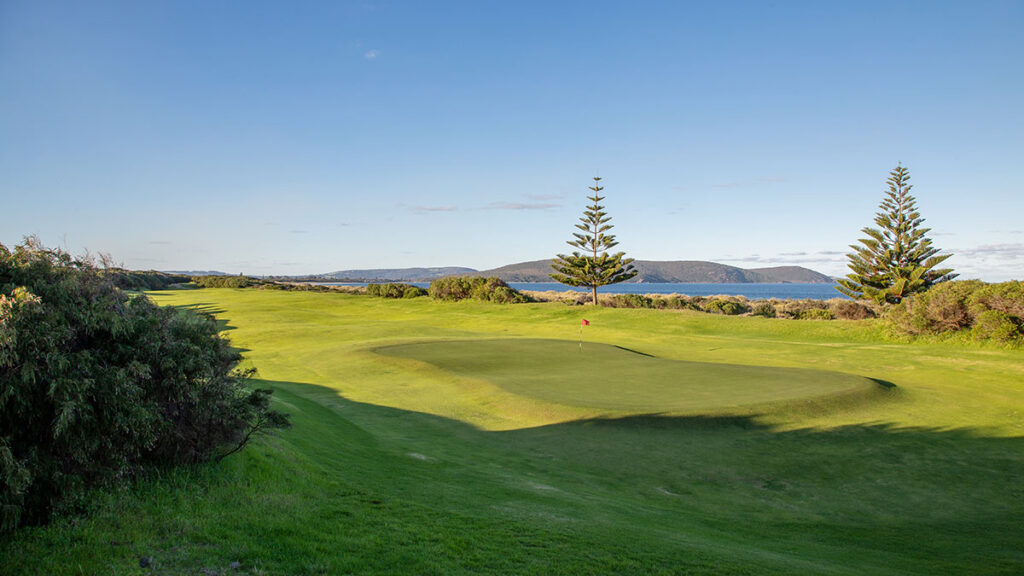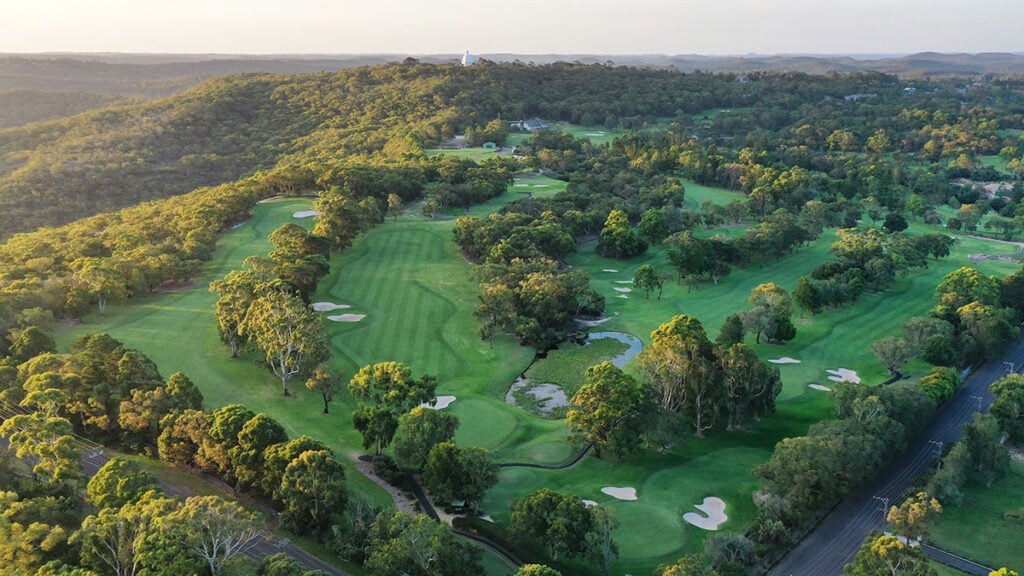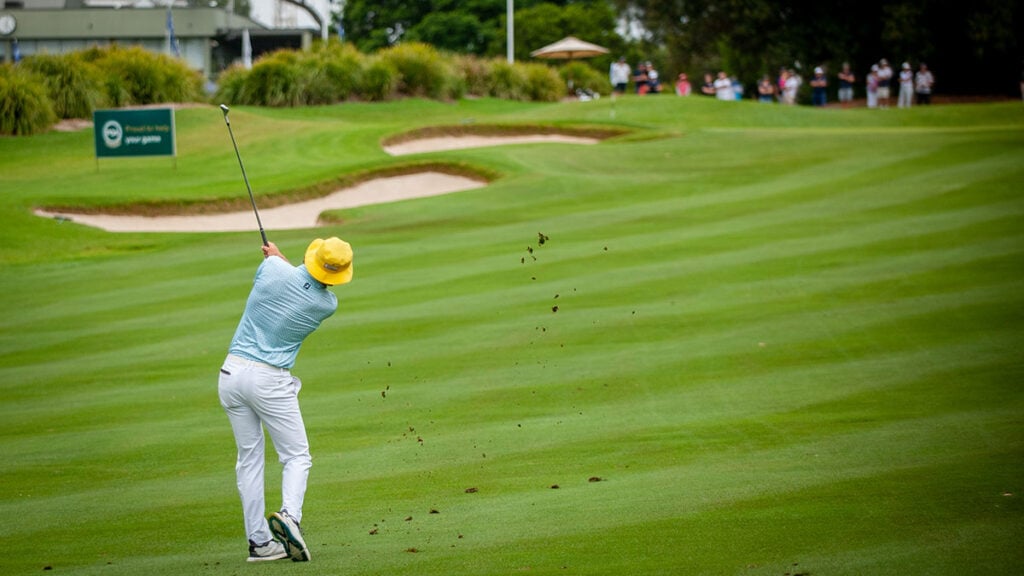How was Hideki Matsuyama’s past month?
The Japan superstar and 2021 Masters champion won an Olympic bronze medal, had belongings stolen in London, had to have a fill in caddie on the PGA Tour because of the robbery and, despite that, won the opening event of the FedEx Cup playoffs and its $US3.6 million prize. He’s had a bit on. En route to the US from Paris where he won bronze at the games, Matsuyama, his caddie, and his coach, ate dinner and at a London restaurant when they realised their bags had been stolen. Among the belongings taken were his caddie and coach’s passports. Those two had to return to Japan to receive new passports and visas. With a fill-in caddie in Memphis for the St Jude event, Matsuyama triumphed for his 10th career PGA Tour victory.
AIG Women’s Open Championship
We’ve got seven Australians in the field this week at the Old Course at St Andrews for the third playing of the AIG Women’s Open at the Home of Golf. Headlined by Olympians Hannah Green, world No.5, and Minjee Lee, the contingent also includes Gabi Ruffels, Steph Kyriacou, Grace Kim, Hira Naveed and the great Karrie Webb. Tip to win? New Zealand’s Lydia Ko. I think she’ll cap off her incredible year, which includes winning the Olympic gold medal recently to become eligible for the LPGA Hall of Fame, with an Open win at the Old Course. It’d be her third major win. Check out the preview BY CLICKING HERE:
PGA Tour
Cameron Davis, Adam Scott and Jason Day are the only three Australians left in the PGA Tour’s FedEx Cup playoffs. They’re teeing up in the 50-man BMW Championship this week at Castle Pines in Denver, Colorado. It’s the second of three events that form the finals series. Tip to win is Xander Schauffele, and look for Tony Finau to earn a top 10. Top Aussie should be Scott, who made his PGA Tour debut at Castle Pines in 2000.
There’s a fun twist to the course?
Correct, it’s over 8,000 yards (7,315 metres) of golf course on a hillside at an altitude more than 6,200 feet above sea level. At high altitude, golf balls travel farther because of the thinner (less dense) air.
“I was joking with Austin Kaiser [his caddie],” Schauffele said, “saying I might have to intentionally hit more club than some guys off of tees just so I can catch my breath by the time I get to my golf ball. I think if you’re first up on some par 3s after a long walk, you might be huffing and puffing a little bit more than normal.”
Throw in a maths test on every shot and this is the BMW Championship at Castle Pines Golf Club that begins on Thursday US time. The altitude, generally listed as 6,200 feet, presents the greatest challenge aside from catching one’s breath after an uphill walk. Obviously, a golf ball carries farther, and the PGA Tour does not often come to the Denver area, this a decade after its last tournament in the area.
“Playing at elevation or at altitude is a little bit of a challenge, depending on the window that you play it, and that’s what I felt like these first couple days. We really tried to get a baseline of those things,” Ludvig Aberg said. “Then obviously it’s going to affect if you knock it down a little bit or get it up in the air. But I try to keep it very similar. I don’t try to complicate it. Try to simplify it and make it very similar to how I treat a normal tournament.”
The PGA Tour calculates that at this altitude, the 8,130 yards (7,434m), the longest in PGA Tour history, is the equivalent of 7,350 yards (6,720m) at sea level, “fairly standard for the PGA Tour.”
“Definitely you have to pay attention to it,” Patrick Cantlay said. “I think the biggest thing is paying attention to trajectory. If you get the ball a little up in the air, it can go quite a bit further. In general, the landing areas aren’t bigger even though the dispersion is going to be bigger. There’s just a little more emphasis on distance control and controlling your trajectory to make sure you play the right [club]. It’s roughly 10 percent, so you get it that 10 percent extra.”
Scottie Scheffler said that he generally will depend on caddie Ted Scott to do the calculations involved in arriving at the proper club selection at this altitude.
“This week he’s doing a lot of the math,” Scheffler said. “We have our numbers and how far the ball goes here, and we still have our numbers at home. So we have two ways we’re trying to do it, depending on the shot, just to where I know that I can get comfortable with the shot we’re trying to hit. Some of that is I have a stock number of what the club goes here, so if my 8-iron goes 165 at home, let’s say it’ll go like low 180s here, something like that.
“We can do it that way or Teddy can do the percentage just based on the time of day. It also changes based on how long the ball is in the air. Uphill shots the ball doesn’t have as much time to fly in the air just based on it being uphill, so it’ll be a smaller percentage and then downhill it’ll be a bigger percentage.
“There is a lot of work that goes into it, so it’s a pretty big adjustment for us.”
Viktor Hovland, meanwhile, actually took his Trackman launch monitor onto the golf course during practice rounds and the pro-am.
“We’ve just been on the range trying to do some work with seeing how far the ball is going,” he said, “and brought a Trackman out on the golf course and kind of checked every single shot in the pro-am and in the practice round yesterday to see if it matches up from what we saw on the range.”
-Additional reporting John Strege




